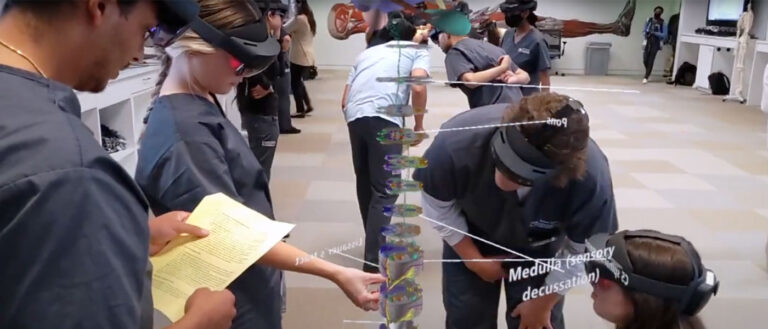This article originally ran in the winter 2023 edition of the School of Dental Medicine’s magazine.
In a classroom at the Health Education Campus of Case Western Reserve University and Cleveland Clinic, a small group of second-year School of Dental Medicine students stand in a circle around a digital cadaver. Together, they dissect the virtual three-dimensional body—removing layers of skin, muscle and bones.
Each student is wearing a Microsoft HoloLens mixed-reality headset, which superimposes holographic content onto otherwise empty classroom space. Transparent visors blend their digital and analog fields of view as the group traces tracts of cranial nerves central to the day’s lesson in neurology.
“I was blown away by how crisp the images are, how we’re able to isolate certain structures and understand the spatial relationship of anatomical structures,” said Tanner Hauptman, a second-year dental student, of the experience last fall. “That first time, we all looked at each other and thought it was so cool. We were taken aback.”
The mixed-reality software Hauptman described is known as HoloAnatomy. Developed by Case Western Reserve’s Interactive Commons—which employs visualization technologies to enhance research and teaching—the software suite was the first third-party application for the Microsoft device. In 2019, the software became the primary means of anatomy education at the university’s School of Medicine.
In fall 2022, the School of Dental Medicine became the first of its kind in the country to use the technology.
“Everyone has different learning styles,” said Caitlyn Ryan, a second-year dental student. “As a visual learner, I find mixed reality helps me bring together concepts learned in many different ways for a better overall understanding.”

